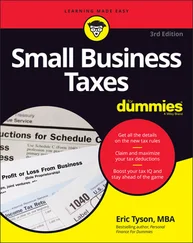CONSIDERING ROTH 401(K) AND 403(B) OPTIONS
Some companies and organizations with traditional retirement savings plans like 401(k)s and 403(b)s also offer a Roth option for these plans. As with a Roth IRA, a Roth 401(k) or Roth 403(b) enables participants to contribute money on an after-tax basis into an account that allows for tax-free compounding of investment returns and tax-free withdrawals after age 59½. Self-employed people also can consider a similar account, known as the individual Roth 401(k). The contribution limits to these Roth accounts are the same as for the regular versions.
So, why might you want to contribute to a Roth 401(k), Roth 403(b) or individual Roth 401(k)? You may currently be in a relatively low tax bracket and won’t save much on current taxes by contributing to a traditional retirement account that offers upfront tax breaks but does tax withdrawals. This could be the case for someone new to the workforce and early in his career. Thanks to the Tax Cuts and Jobs Act, which took effect in 2018, federal income tax rates are relatively low in the United States now.
Those who are later in their careers might also consider these accounts if looking ahead to their retirement years; they are likely to be in a high or higher tax bracket. This might be the case for folks who have accumulated significant balances in tax-deferred retirement accounts.
 If you can’t deduct your contribution to a standard IRA account or find yourself in a relatively low bracket currently, consider making a contribution to a non-deductible IRA account called the Roth IRA. Single taxpayers with an AGI less than $124,000 and joint filers with an AGI less than $196,000 can contribute up to $6,000 per year to a Roth IRA. Those age 50 and older can contribute $7,000. Although the contribution isn’t deductible, earnings inside the account are shielded from taxes, and, unlike a standard IRA, qualified withdrawals from the account are free from income tax.
If you can’t deduct your contribution to a standard IRA account or find yourself in a relatively low bracket currently, consider making a contribution to a non-deductible IRA account called the Roth IRA. Single taxpayers with an AGI less than $124,000 and joint filers with an AGI less than $196,000 can contribute up to $6,000 per year to a Roth IRA. Those age 50 and older can contribute $7,000. Although the contribution isn’t deductible, earnings inside the account are shielded from taxes, and, unlike a standard IRA, qualified withdrawals from the account are free from income tax.
If you’ve contributed all you’re legally allowed to contribute to your IRA accounts and still want to put away more money for retirement, consider annuities. Annuities are contracts that insurance companies back. If you, the annuity holder (investor), should die during the so-called accumulation phase (that is, prior to receiving payments from the annuity), your designated beneficiary is guaranteed reimbursement of the amount of your original investment.
Annuities, like IRAs, allow your capital to grow and compound tax-deferred. You defer taxes until you withdraw the money. However, unlike an IRA that has an annual contribution limit of a few thousand dollars, you can deposit as much as you want in any year to an annuity — even millions of dollars, if you’ve got it! However, as with a Roth IRA, you get no upfront tax deduction for your contributions.
 Because annuity contributions aren’t tax-deductible, and because annuities carry higher annual operating fees to pay for the small amount of insurance that comes with them, consider contributing to one only after you’ve fully exhausted your other retirement account investing options. Because of their higher annual expenses, annuities generally make sense only if you have 15 or more years to wait until you need the money.
Because annuity contributions aren’t tax-deductible, and because annuities carry higher annual operating fees to pay for the small amount of insurance that comes with them, consider contributing to one only after you’ve fully exhausted your other retirement account investing options. Because of their higher annual expenses, annuities generally make sense only if you have 15 or more years to wait until you need the money.
Choosing retirement account investments
When you establish a retirement account, you may not realize that the retirement account is simply a shell or shield that keeps the federal, state, and local governments from taxing your investment earnings each year. You still must choose which investments you want to hold inside your retirement account shell.
You may invest money for your IRA or self-employed plan retirement account (for example, your SEP-IRA) in stocks, bonds, mutual funds, exchange-traded funds, and even bank accounts. Mutual funds (offered in most employer-based plans) and exchange-traded funds, which I cover in detail in Chapter 8, are an ideal choice because they offer diversification and professional management. After you decide which financial institution you want to invest through, simply obtain and complete the appropriate paperwork for establishing the specific type of account you want. (Go to the later section “ Choosing the Right Investment Mix” for more information.)
Taming Your Taxes in Non-Retirement Accounts
When you invest outside of tax-sheltered retirement accounts, the distributions on your money (for example, dividends) and realized gains when you sell are subject to taxation. So the non-retirement account investments that make sense for you depend (at least partly) on your tax situation.
 If you have money to invest, or if you’re considering selling current investments that you hold, taxes should factor into your decision. But tax considerations alone shouldn’t dictate how and where you invest your money. You should also weigh investment choices, your desire and the necessity to take risk, personal likes and dislikes, and the number of years you plan to hold the investment (see the section “ Choosing the Right Investment Mix,” later in the chapter, for more information on these other factors).
If you have money to invest, or if you’re considering selling current investments that you hold, taxes should factor into your decision. But tax considerations alone shouldn’t dictate how and where you invest your money. You should also weigh investment choices, your desire and the necessity to take risk, personal likes and dislikes, and the number of years you plan to hold the investment (see the section “ Choosing the Right Investment Mix,” later in the chapter, for more information on these other factors).
Figuring out your tax bracket
You may not know it, but the government charges you different tax rates for different parts of your annual income. You pay less tax on the first dollars of your earnings and more tax on the last dollars of your earnings. For example, if you’re single and your taxable income totaled $50,000 during 2020, you paid federal tax at the rate of 10 percent on the first $9,875, 12 percent on the taxable income above $9,875 up to $40,125, and 22 percent on income above $40,125 up to $50,000.
Your marginal tax rate is the rate of tax that you pay on your last, or so-called highest, dollars of income. In the example of a single person with taxable income of $50,000, that person’s federal marginal tax rate is 22 percent. In other words, he effectively pays a 22 percent federal tax on his last dollars of income — those dollars earned between $40,125 and $50,000. (Don’t forget to factor in the state income taxes that most states assess.)
 Knowing your marginal tax rate allows you to quickly calculate the following:
Knowing your marginal tax rate allows you to quickly calculate the following:
Any additional taxes that you would pay on additional income
The amount of taxes that you save if you contribute more money into retirement accounts or reduce your taxable income (for example, if you choose investments that produce tax-free income)
Table 3-1shows the federal income tax rates for singles and for married households that file jointly.
TABLE 3-12020 Federal Income Tax Rates
| Singles Taxable Income |
Married Filing Jointly Taxable Income |
Federal Tax Rate |
| Less than $9,875 |
Less than $19,750 |
10% |
| $9,875 to $40,125 |
$19,750 to $80,250 |
12% |
| $40,125 to $85,525 |
$80,250 to $171,050 |
22% |
| $85,525 to $163,300 |
$171,050 to $326,600 |
24% |
| $163,300 to $207,350 |
$326,600 to $414,700 |
32% |
| $207,350 to $518,400 |
$414,700 to $622,050 |
35% |
| More than $518,400 |
More than $622,050 |
37% |
Knowing what’s taxed and when to worry
Читать дальше

 If you can’t deduct your contribution to a standard IRA account or find yourself in a relatively low bracket currently, consider making a contribution to a non-deductible IRA account called the Roth IRA. Single taxpayers with an AGI less than $124,000 and joint filers with an AGI less than $196,000 can contribute up to $6,000 per year to a Roth IRA. Those age 50 and older can contribute $7,000. Although the contribution isn’t deductible, earnings inside the account are shielded from taxes, and, unlike a standard IRA, qualified withdrawals from the account are free from income tax.
If you can’t deduct your contribution to a standard IRA account or find yourself in a relatively low bracket currently, consider making a contribution to a non-deductible IRA account called the Roth IRA. Single taxpayers with an AGI less than $124,000 and joint filers with an AGI less than $196,000 can contribute up to $6,000 per year to a Roth IRA. Those age 50 and older can contribute $7,000. Although the contribution isn’t deductible, earnings inside the account are shielded from taxes, and, unlike a standard IRA, qualified withdrawals from the account are free from income tax. Because annuity contributions aren’t tax-deductible, and because annuities carry higher annual operating fees to pay for the small amount of insurance that comes with them, consider contributing to one only after you’ve fully exhausted your other retirement account investing options. Because of their higher annual expenses, annuities generally make sense only if you have 15 or more years to wait until you need the money.
Because annuity contributions aren’t tax-deductible, and because annuities carry higher annual operating fees to pay for the small amount of insurance that comes with them, consider contributing to one only after you’ve fully exhausted your other retirement account investing options. Because of their higher annual expenses, annuities generally make sense only if you have 15 or more years to wait until you need the money.










